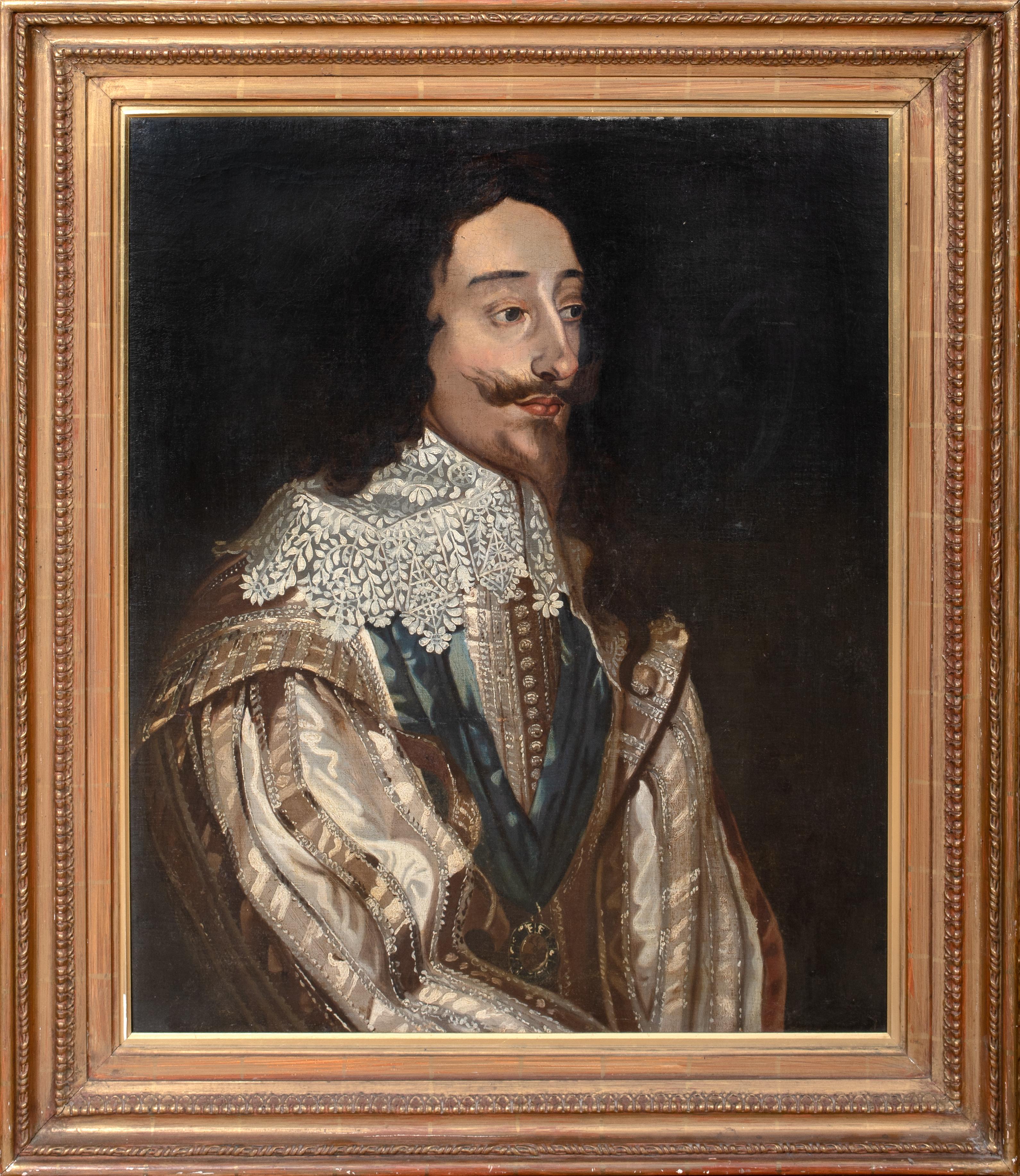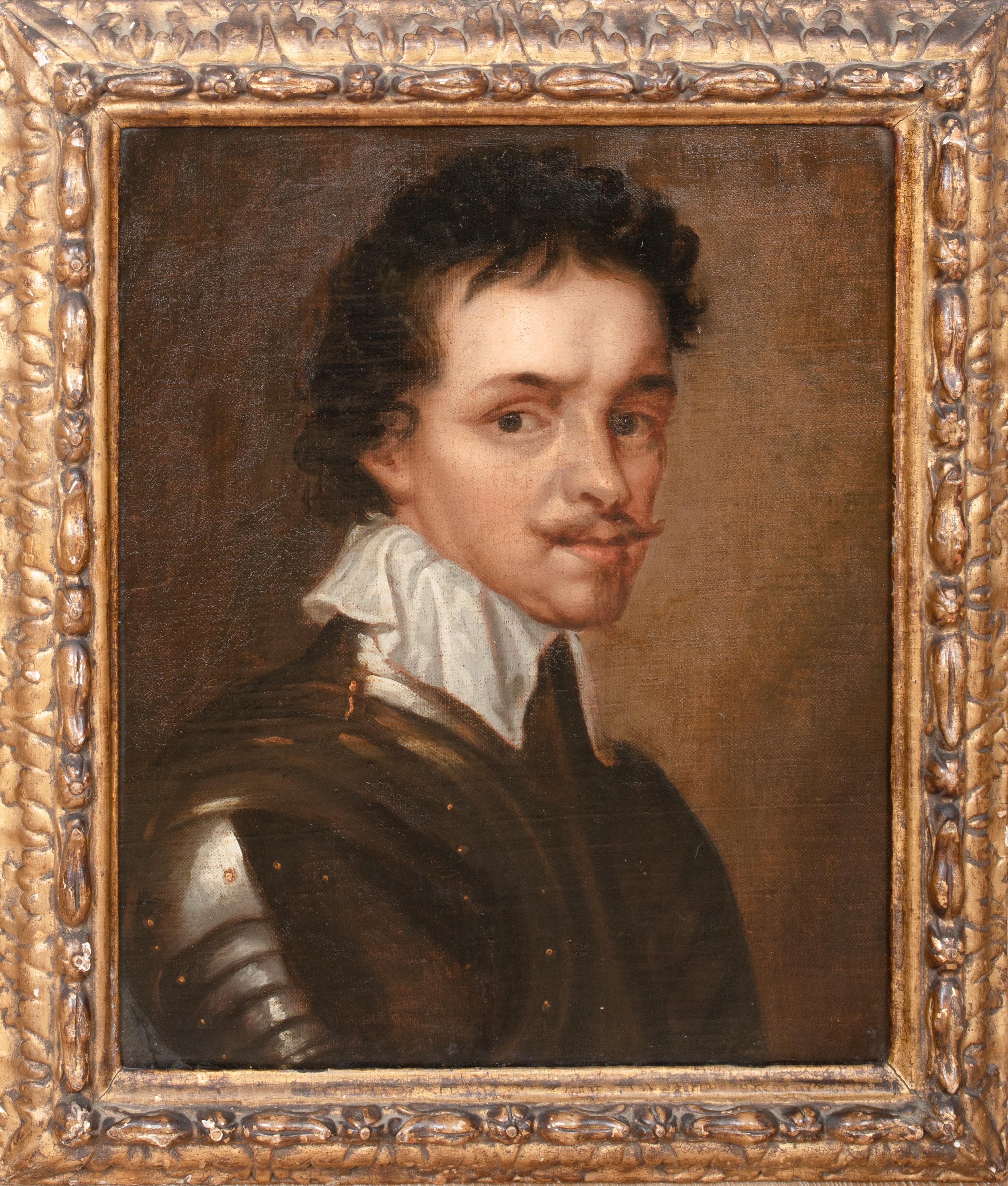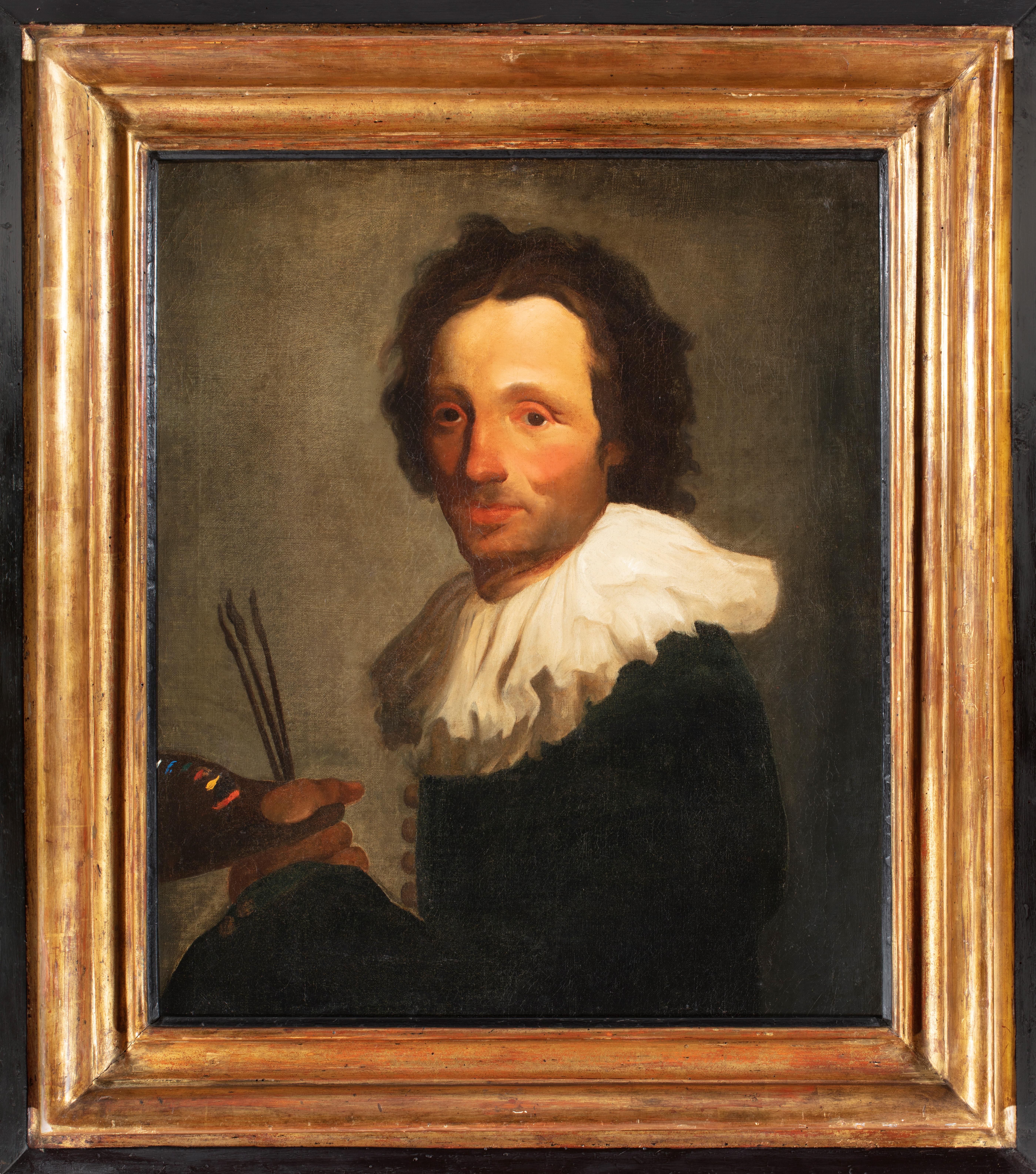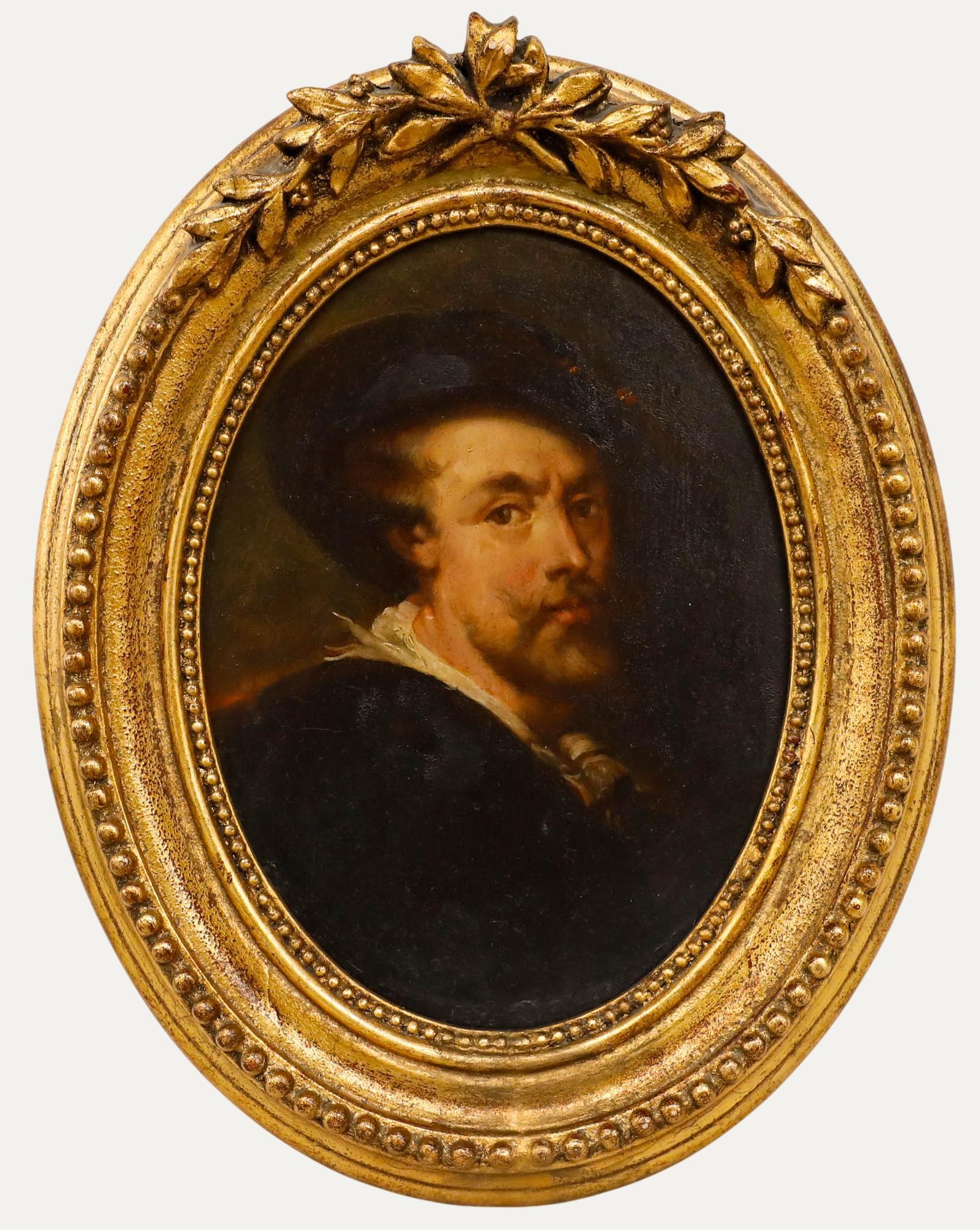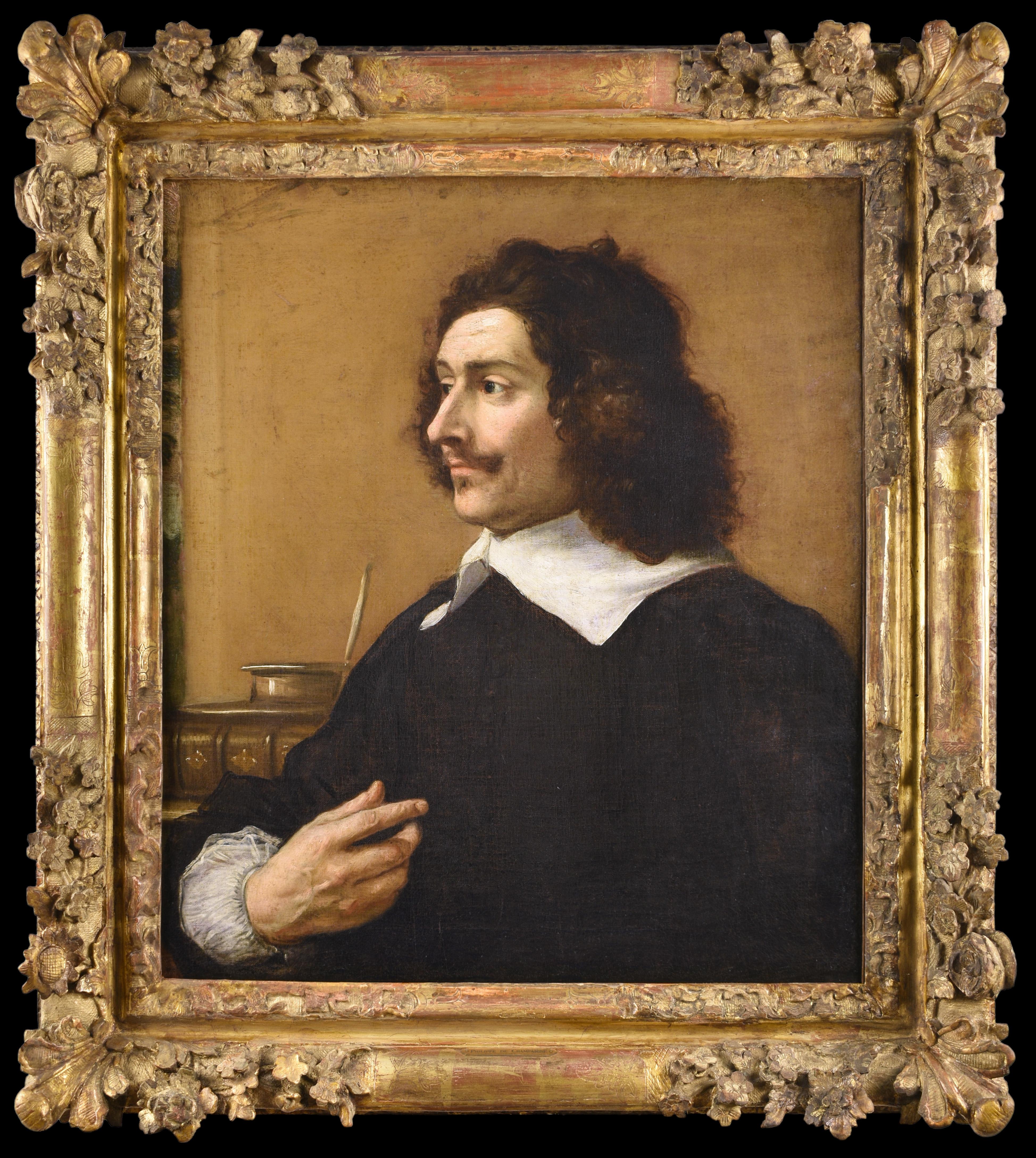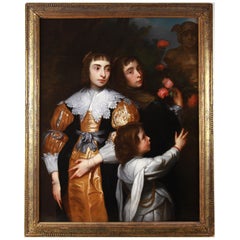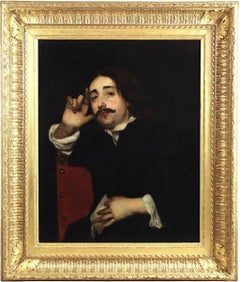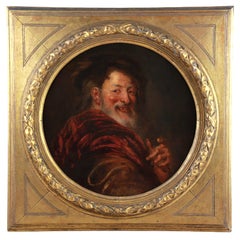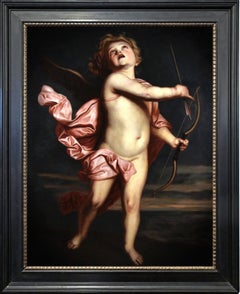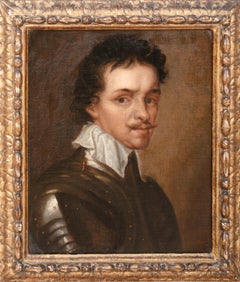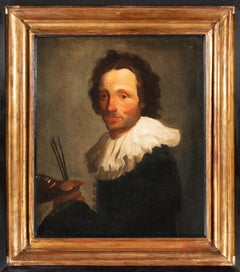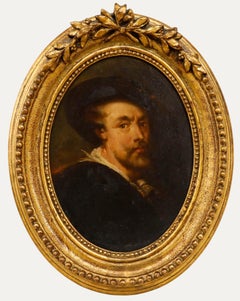Items Similar to Oil On Canvas Self Portrait of the artist Sir Anthony Van Dyck 18Th c
Want more images or videos?
Request additional images or videos from the seller
1 of 10
UnknownOil On Canvas Self Portrait of the artist Sir Anthony Van Dyck 18Th cca 1770
ca 1770
$30,768.98
£23,082.37
€25,900
CA$42,601.87
A$46,300.91
CHF 24,813.06
MX$562,175.35
NOK 311,512.91
SEK 288,880.88
DKK 197,309.93
About the Item
"Oil On Canvas Self Portrait After Sir Anthony Van Dyck"
Follower of Sir Anthony van Dyck (Flemish painter, 1599-1641), Self portrait Oil on canvas (doubled),
Probably end 18th century, presented in a beautiful old original golden frame.
See Dorotheum Austria , Old and 18th Century Paintings, Dec 1 , 2023, Lot 36 follower of Anthonius Van Dyck
Additional info:
Title: Self Portrait of the artist
Style: baroque
Medium: oil on canvas
Signature: unsigned
Provenance: private collection Austria
Canvas dimensions: 51 cm x 61 cm
Framed dimensions: 64 cm x 73 cm
Condition: Restored by our workshop ( cleaned see picture , much older canvas re-lining )
Artist: follower of Anthony Van Dyck ( 1599-1641 )
School: School of Antwerp
Sold with a very beautiful restored original frame
- Creation Year:ca 1770
- Dimensions:Height: 28.75 in (73 cm)Width: 25.2 in (64 cm)Depth: 1.97 in (5 cm)
- More Editions & Sizes:Canvas dimensions: 51 cm x 61 cmPrice: $30,769
- Medium:
- Movement & Style:
- Period:
- Condition:Condition: cleaned by our workshop ( much older re-lining by previous owner/restorer ).
- Gallery Location:Gavere, BE
- Reference Number:1stDibs: LU2667216162292
About the Seller
5.0
Gold Seller
Premium sellers maintaining a 4.3+ rating and 24-hour response times
Established in 2016
1stDibs seller since 2023
28 sales on 1stDibs
- ShippingRetrieving quote...Shipping from: Gavere, Belgium
- Return Policy
More From This Seller
View AllOil On Canvas Family Portrait After Sir Anthony Van Dyck ca 1870
By Anthony van Dyck
Located in Gavere, BE
"Oil On Canvas Family Portrait After Sir Anthony Van Dyck"
After Sir Anthony van Dyck (Flemish painter, 1599-1641), Group of three young girls with a bust of Mercury Oil on canvas (doubled),
probably end 19th century, with French wax seal...
Category
1870s Baroque Portrait Paintings
Materials
Gold Leaf
$26,135 Sale Price
20% Off
Portrait of a seated man , oil on canvas painting from the 19th century
Located in Gavere, BE
Portrait of a seated man , oil on canvas painting from the 19th century
Wonderful and large oil on canvas of a seated man, Flemish school from the end of the 19th century.
Sold with...
Category
1880s Flemish School Figurative Paintings
Materials
Gold Leaf
$12,260 Sale Price
20% Off
Free Shipping
Portrait of Democritus French 18Th century oil painting attr. to Antoine Coypel
By Antoine Coypel
Located in Gavere, BE
Title: Portrait of Democritus
Médium: oil on canvas laid on wooden panel
Signature: signed under right
Provenance: private collection France
Dimensions canvas: 49 cm x 49 cm
Dimensio...
Category
18th Century French School Portrait Paintings
Materials
Gold Leaf
Old baroque oil painting on canvas "Cupid" after Sir Anthony van Dyck
By Anthony van Dyck
Located in Gavere, BE
Oil on canvas "Cupid" circa 1900 after Anthony van Dyck ** Sold without the frame **
additional info:
Title: cupid
Style: baroque
Medium: oil on canvas
Signature: unsigned
Provenan...
Category
1890s Baroque Figurative Paintings
Materials
Canvas, Oil
$11,167 Sale Price
20% Off
Large French Oil painting On Canvas, portrait of a musketeer 19th century
Located in Gavere, BE
Beautiful Oil On Canvas, portrait of a musketeer French school 19th century
This is a French 19th century school with large dimensions .
Very decorative and exclusive portrait paint...
Category
1890s French School Portrait Paintings
Materials
Gold Leaf
Oil On Canvas, portrait of a musketeer French school 20th century
Located in Gavere, BE
Oil On Canvas, portrait of a musketeer French school 20th century
Horace Colmaire studied with Albert Roze in Amiens before joining the workshops of Léon Bonnat, Jules Adler and Ray...
Category
1920s French School Portrait Paintings
Materials
Gold Leaf
You May Also Like
Portrait Of King Charles I, 17th Century School of Anthony Van Dyck (1599-1641)
By Anthony van Dyck
Located in Blackwater, GB
Portrait Of King Charles I, 17th Century
School of Anthony Van Dyck (1599-1641)
Large 17th Century English School portrait of Charles I, King of England, Scotland and Ireland, oil ...
Category
17th Century Portrait Paintings
Materials
Canvas, Oil
$4,092 Sale Price
30% Off
Portrait Thomas Wentworth, 1st Earl of Stafford (1593-1641), 17th Century
Located in Blackwater, GB
Portrait Thomas Wentworth, 1st Earl of Stafford (1593-1641), 17th Century
Circle of Anthonius VAN DYCK (1599-1641)
Fine 17th century English School Old Master portrait of Anthonius...
Category
19th Century Portrait Paintings
Materials
Canvas, Oil
$7,614 Sale Price
30% Off
17th Century By Niccolo' Cassana Self-portrait Oil On Canvas
Located in Milano, Lombardia
Niccolò Cassana (Venice, Italy, 1659 - London, UK, 1713)
Title: Self-portrait
Medium: Oil on canvas
Dimensions: without frame 64 x 54 cm - with frame 89 x 78 cm
Antique shaped wooden cassetta frame...
Category
Late 17th Century Italian School Portrait Paintings
Materials
Cotton Canvas, Canvas, Oil
$8,197 Sale Price
20% Off
After Peter Paul Rubens (1577-1640) - 19th Century Oil, Self-Portrait
Located in Corsham, GB
A finely executed copy of Peter Paul Rubens' 1623 self-portrait. Inscribed "Eigentum von Friedbert Dorfler" (Property of Friedbert Dorfler) to the reverse. Well presented in a gilt-e...
Category
19th Century Portrait Paintings
Materials
Oil
Portrait of a Nobleman, French School 17th Century
Located in New York, NY
French portrait of a nobleman, 17th Century, great condition. With a beautiful carved wooden frame.
Category
17th Century Baroque Portrait Paintings
Materials
Canvas, Oil
Portrait of William Herbert, 3rd Earl of Pembroke, Early 17th Century Portrait
Located in London, GB
English School, (circa 1600)
Portrait of William Herbert, 3rd Earl of Pembroke
Oil on panel, oval
Image size: 29¼ x 23⅞ inches
Painted wooden frame
Provenance:
176, Collection of Francis Greville, 1st Earl of Warwick.
The Trustees of the Lord Brooks’ Settlement, (removed from Warwick Castle).
Sotheby’s, London, 22nd March 1968, lot 81.
Painted onto wooden panel, this portrait shows a dark haired gentleman in profile sporting an open white shirt. On top of this garments is a richly detailed black cloak, decorated with gold thread and lined with a sumptuous crimson lining. With the red silk inside it’s all very expensive and would fall under sumptuary laws – so this is a nobleman of high degree.
It’s melancholic air conforms to the contemporary popularity of this very human condition, evident in fashionable poetry and music of the period. In comparison to our own modern prejudices, melancholy was associated with creativity in this period.
This portrait appeared in the earliest described list of pictures of Warwick castle dating to 1762. Compiled by collector and antiquary Sir William Musgrave ‘taken from the information of Lord & Lady Warwick’ (Add. MSS, 5726 fol. 3) is described;
‘8. Earl of Essex – an original by Zuccharo – seen in profile with black hair. Holding a black robe across his breast with his right hand.’
As tempting as it is to imagine that this is a portrait of Robert Devereux, the 2nd Earl Essex, we might take this with a pinch of salt. Its identification with this romantic and fatal Elizabethan might well have been an attempt to add romance to Warwick Castle’s walls. It doesn’t correspond all that well with Essex’s portraits around 1600 after his return from Cadiz. Notably, this picture was presumably hung not too far away from the castle’s two portraits of Queen Elizabeth I. The first, and undoubtedly the best, being the exquisite coronation portrait that was sold by Lord Brooke in the late 1970s and now hangs in the National Portrait Gallery. The second, described as being ‘a copy from the original at Ld Hydes’, has yet to resurface.
The portrait eventually ended up being hung in the State Bedroom of Warwick Castle.
Archival documents present one other interesting candidate. The Greville family’s earliest inventory of paintings, made in 1630 at their home Brooke House in Holborn, London, describes five portraits of identified figures. All five belonged to the courtier, politician and poet Sir Fulke Greville (1554-1628), 1st Baron Brooke, and were hung in the ‘Gallerie’ of Brooke House behind yellow curtains. One of them was described as being of ‘Lord of Pembrooke’, which is likely to have been William Herbert (1580-1630), 3rd Earl of Pembroke. William was the eldest son of Greville’s best friend’s sister Mary Sidney, and was brought up in the particularly literary and poetically orientated household which his mother had supported. Notably, the 3rd Earl was one of the figures that Shakespeare’s first folio was dedicated to in 1623.
The melancholic air to the portrait corresponds to William’s own pretensions as a learned and poetic figure. The richness of the robe in the painting, sporting golden thread and a spotted black fabric, is indicative of wealth beyond that of a simple poet or actor. The portrait’s dating to around the year 1600 might have coincided with William’s father death and his own rise to the Pembroke Earldom. This period of his life too was imbued with personal sadness, as an illicit affair with a Mary Fitton had resulted in a pregnancy and eventual banishment by Elizabeth I to Wilton after a short spell in Fleet Prison. His illegitimate son died shortly after being born. Despite being a close follower of the Earl of Essex, William had side-stepped supporting Devereux in the fatal uprising against the Queen and eventually regained favour at the court of the next monarch James I.
His linen shirt is edged with a delicate border of lace and his black cloak is lined on the inside with sumptuous scarlet and richly decorated on the outside with gold braid and a pattern of embroidered black spots.
Despite the richness of his clothes, William Herbert has been presented in a dishevelled state of semi-undress, his shirt unlaced far down his chest with the ties lying limply over his hand, indicating that he is in a state of distracted detachment. It has been suggested that the fashion for melancholy was rooted in an increase in self-consciousness and introspective reflection during the late 16th and early 17th centuries.
In contemporary literature melancholy was said to be caused by a plenitude of the melancholy humor, one of the four vital humors, which were thought to regulate the functions of the body. An abundance of the melancholia humor was associated with a heightened creativity and intellectual ability and hence melancholy was linked to the notion of genius, as reflected in the work of the Oxford scholar Robert Burton, who in his work ‘The Anatomy of Melancholy’, described the Malcontent as ‘of all others [the]… most witty, [who] causeth many times divine ravishment, and a kind of enthusiamus… which stirreth them up to be excellent Philosophers, Poets and Prophets.’ (R. Burton, The Anatomy of Melancholy, London, 1621 in R. Strong, ‘Elizabethan Malady: Melancholy in Elizabethan and Jacobean Portraits’, Apollo, LXXIX, 1964).
Melancholy was viewed as a highly fashionable affliction under Elizabeth I, and her successor James I, and a dejected demeanour was adopted by wealthy young men, often presenting themselves as scholars or despondent lovers, as reflected in the portraiture and literature from this period. Although the sitter in this portrait is, as yet, unidentified, it seems probable that he was a nobleman with literary or artistic ambitions, following in the same vain as such famous figures as the aristocratic poet and dramatist, Edward de Vere...
Category
Early 17th Century Old Masters Portrait Paintings
Materials
Oil, Wood Panel
More Ways To Browse
Flemish 18th Century Oil Painting
18th Century Baroque Frame
Flemish Portrait
Unknown Artist Portrait Painting
Sir Anthony Van Dyck
Hopi Art Painting
Jacob Markiel
Jazz Painting Large
Jean Jacques Henner
John Golding Painting
John Julian
Lempicka Painting
London Blitz
Lonely Man
Marlboro Man
Mid Century Friends
Nude Painting Of A Boy 2019
Nun Oil Painting
